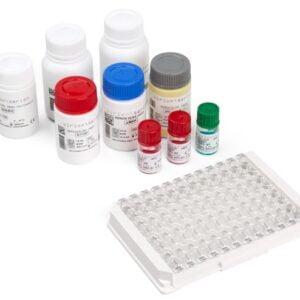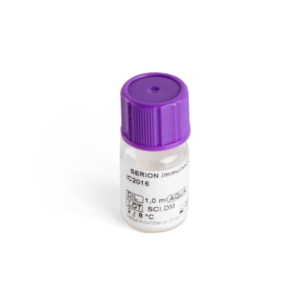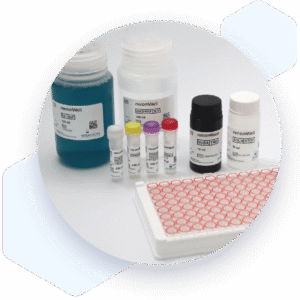| Weight | 1 lbs |
|---|---|
| Dimensions | 9 × 5 × 2 in |
| target | Candida albicans reactive IgM |
| species reactivity | Candida albicans |
| applications | ELISA |
| assay type | Indirect & quantitative |
| available sizes | 96 tests |
Candida albicans IgM ELISA Kit ESR117M
$398.00
RF-Absorbent Z200 for use with IgM ELISA kits
Did you know that RF Absorbent Z200 is recommended for the removal of IgM rheumatoid factors from serum and plasma samples prior to the detection of pathogen-specific IgM? Consider adding it to your cart for improved signal specificity. For more details, please refer to the IgM ELISA kit protocol.
- Virion/Serion Diagnostic Kit for research use (RUO)
- Candida albicans IgM ELISA Kit
- Suitable for IgM detection
- Ready-to-use
- 96 tests
Candida albicans IgM ELISA Kit ESR117M
| kit | ||||||||||||||||||
|---|---|---|---|---|---|---|---|---|---|---|---|---|---|---|---|---|---|---|
| Assay type Indirect ELISA | ||||||||||||||||||
| Research area Infectious Disease | ||||||||||||||||||
| Sample type Serum, plasma, whole blood | ||||||||||||||||||
| Notes Pretreatment of samples with RF-Absorbent (Z200) is recommended for use with IgM ELISA kits to eliminate presence of sample rheumatoid factors and possible false negative results. | ||||||||||||||||||
Components
| ||||||||||||||||||
| Storage Store at 2-8°C. | ||||||||||||||||||
| Associated products Candida albicans Antigen (BA117VS) Candida Antigen Assay Control (BC200) Candida albicans IgA Control Serum (BC117A) Candida albicans IgG Control Serum (BC117G) Candida albicans IgM Control Serum (BC117M) Candida albicans IgA ELISA Kit (ESR117A) Candida albicans IgG ELISA Kit (ESR117G) Candida albicans IgM ELISA Kit (ESR117M) Candida Antigen Detection ELISA Kit (ESR200) |
| target relevance |
|---|
| Organism Candida albicans |
| Protein names Candida albicans |
| Structure and strains Candida albicans is an opportunistic pathogenic yeast that is a common member of the human gut flora. It can also survive outside the human body. It is detected in the gastrointestinal tract and mouth in 40 60% of healthy adults. It is usually a commensal organism, but it can become pathogenic in immunocompromised individuals under a variety of conditions. It is one of the few species of the genus Candida that cause the human infection candidiasis, which results from an overgrowth of the fungus. Candidiasis is, for example, often observed in HIV-infected patients. C. albicans is the most common fungal species isolated from biofilms either formed on (permanent) implanted medical devices or on human tissue. C. albicans, C. tropicalis, C. parapsilosis, and C. glabrata are together responsible for 50 90% of all cases of candidiasis in humans. A mortality rate of 40% has been reported for patients with systemic candidiasis due to C. albicans. By one estimate, invasive candidiasis contracted in a hospital causes 2,800 to 11,200 deaths yearly in the US. Nevertheless, these numbers may not truly reflect the true extent of damage this organism causes, given new studies indicating that C. albicans can cross the blood brain barrier in mice. |
| Detection and diagnosis The diagnosis of candidiasis on the basis of serological methods is not easy: On the one hand transient yeast colonization may induce an antibody response, on the other hand systemic Candida mycosis in immunosuppressed patients may only lead to minor changes in antibody activities. Such situations make critical interpretation of serological findings necessary. In addition, systemic Candida infections may not cause typical symptoms. Currently, no single technique in isolation allows for a definitive serological diagnosis of candidiasis. Surveillance of at risk patients and therapy control requires the use of a variety of methods including serology and antigen detection |
Data
Publications
| pmid | title | authors | citation |
|---|---|---|---|
| We haven't added any publications to our database yet. | |||
Protocols
| relevant to this product |
|---|
| ESR117M protocol |
Documents
| # | ||
|---|---|---|
| Please enter your product and batch number here to retrieve product datasheet, SDS, and QC information. | ||
Only logged in customers who have purchased this product may leave a review.




Reviews
There are no reviews yet.